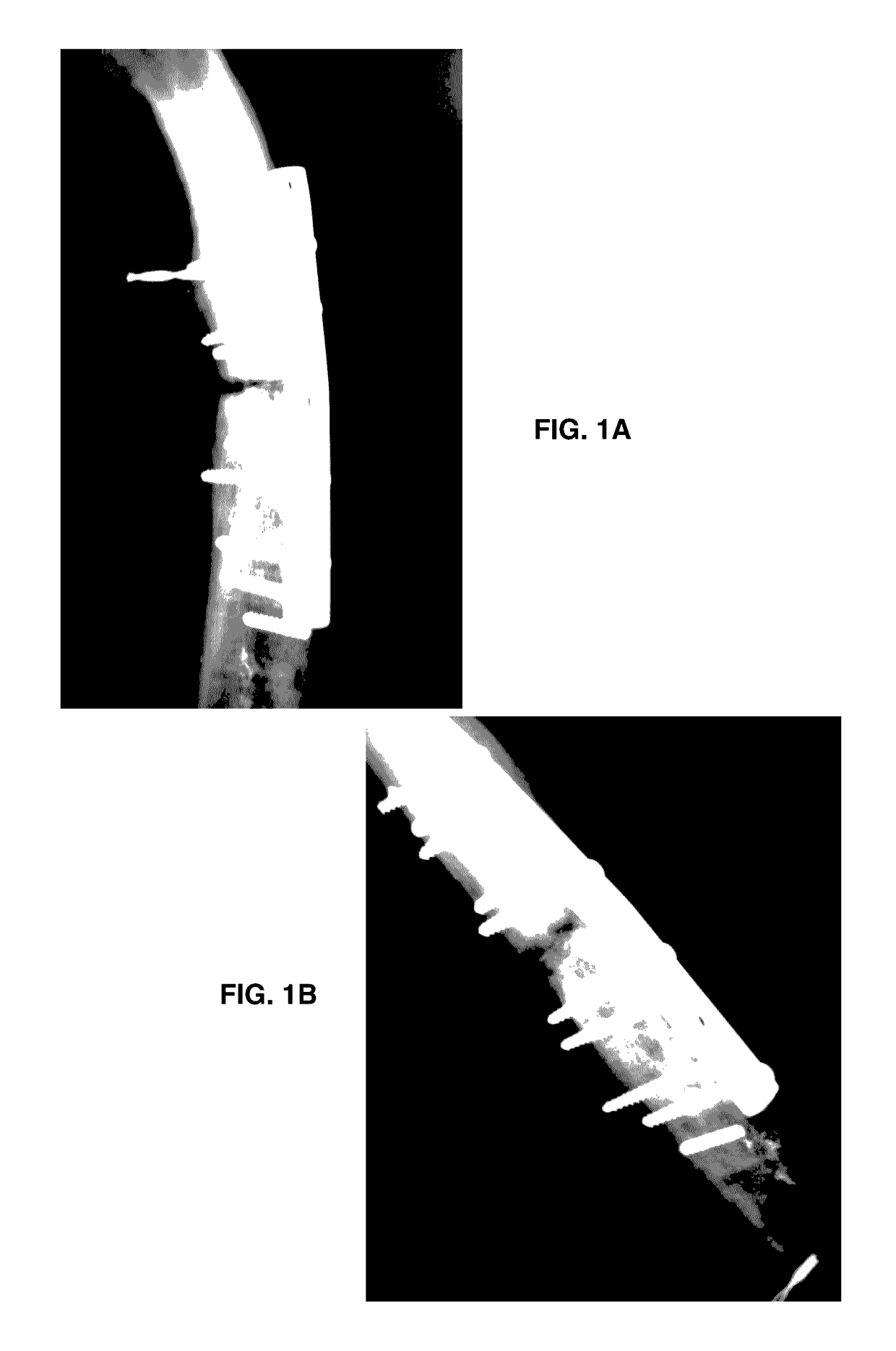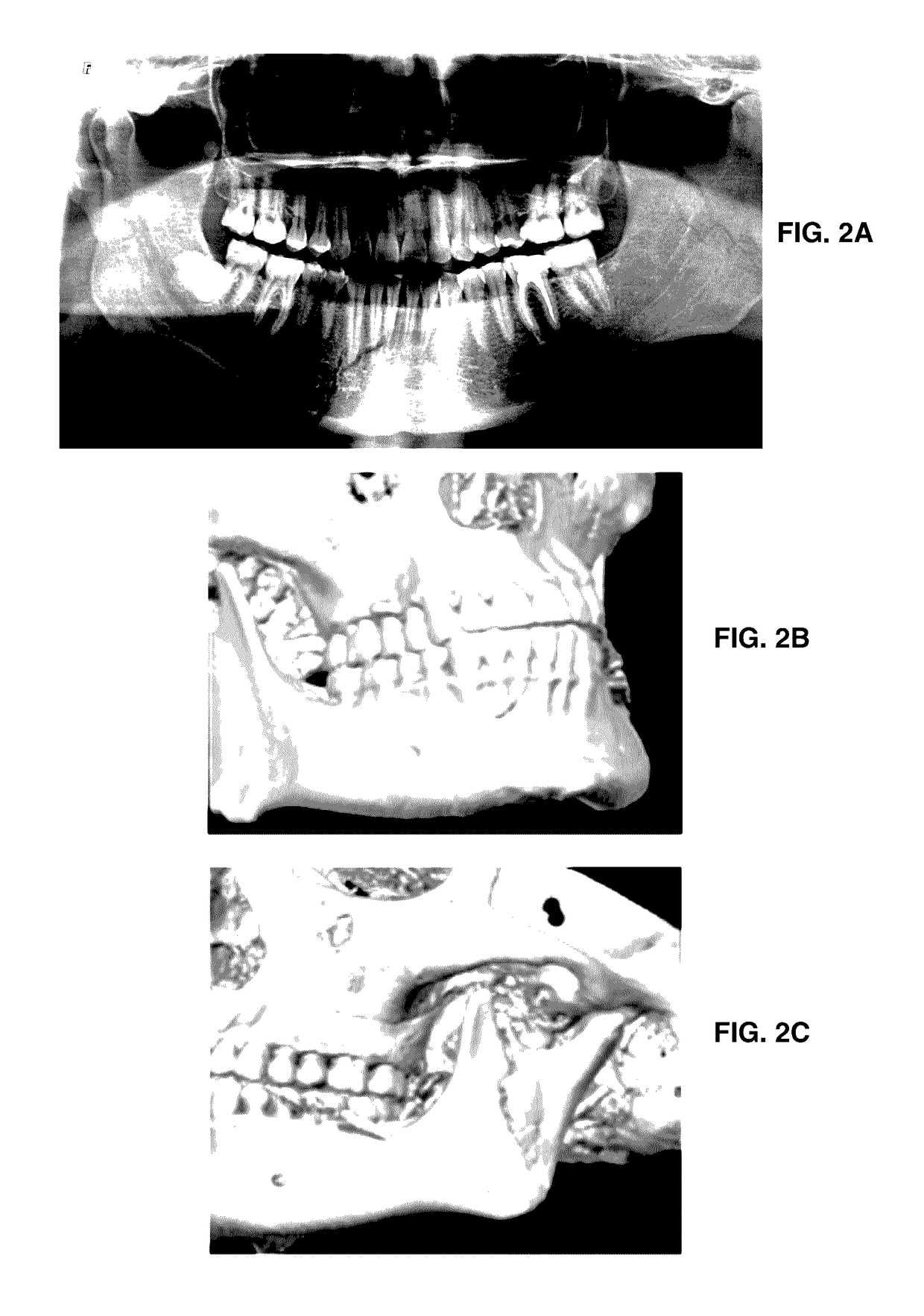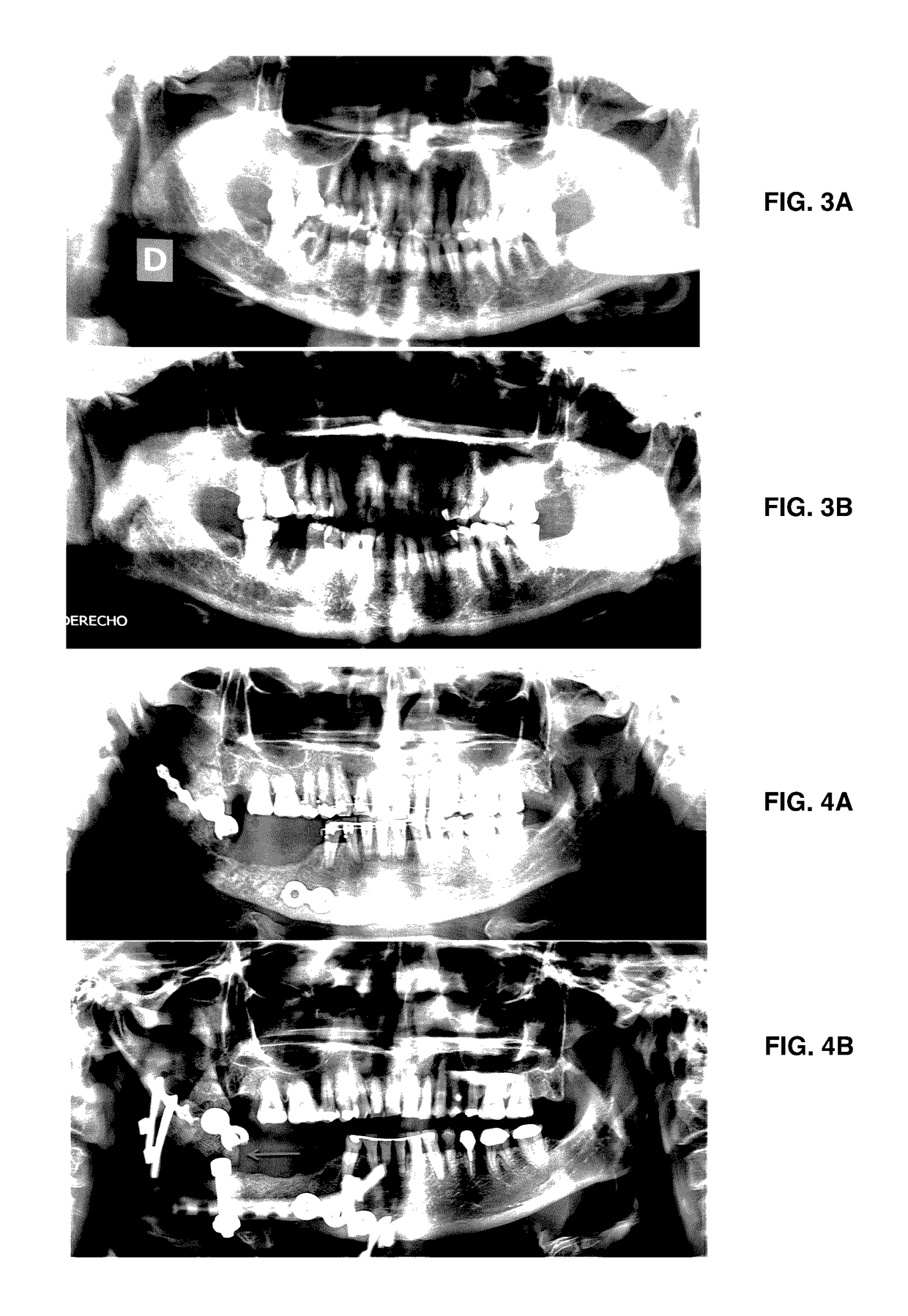Formulation for regeneration of bone, cartilage, teeth, and periodontium and treatment of tumors and cysts
a technology which is applied in the field of bone and cartilage physiology and the treatment of tumors and cysts, can solve the problems of short-lived reduction of symptoms, high cost of surgical treatment, and reduced quality of life, and achieves remarkable osteogenesis and quick and efficient osteogenesis
- Summary
- Abstract
- Description
- Claims
- Application Information
AI Technical Summary
Benefits of technology
Problems solved by technology
Method used
Image
Examples
example 1
Treatment Method for Cysts and Tumors of the Law
[0077]When present, most of the intralesional fluid is drained. If clinical evidence of infection is found inside the lesion, the niche is washed. Depending on the size of the injury, from 1-8 mL of an antiseptic (electrolyzed superoxidized water solution of neutral pH, ESTERICIDE®) is injected and immediately drained back. Formulation 1 or Formulation 2 of the present invention is applied, intralesionally and percutaneously, perfusing all loculi, making sure to reach all perimeter walls of the lesion, according to the tomography, and, if necessary, a fluoroscope is used. Depending on the tumor's size, 0.5-5.0 mL of the formulation may be perfused. The progress of the treatment is clinically monitored every 3 or 5 days, any intralesional fluid is aspirated with a needle, and tomographic follow-up is given one and two weeks post-treatment.
[0078]Three cases may arise. First, if the osteogenesis progressed satisfactorily, clinical follow-...
example 2
Treatment Method for Regeneration of Teeth and Periodontium
[0079]Dental cleaning (scaling) is performed using ESTERICIDE® antiseptic as the irrigant. In the case of periodontal disease or infection, an antiseptic (ESTERICIDE®) is perfused intralesionally and peripheral to the compromised tooth, once a day until eradication of the infection. In case of tooth decay, cavity, dental crack, loose filling or pulp exposure, the injury is treated first. When major loss of dental tissue has occurred, significant mobility may be present, so ferulization might be required. Peripheral immobilization with surgical wire could be necessary when treating a coronal and / or apical fractured tooth. Application of sodium fluoride is recommended when treating a fracture involving presence of enamel. Approximately 0.5-3.0 mL of formulation 1 of the present invention was applied peri- and intraligamentary.
example 3
Treatment Method for Bone Fractures and Osteoporosis
[0080]If required, the injury is pretreated as follows. In the case of osteomyelitis, 1-5 mL of antiseptic (ESTERICIDE®) is perfused intralesionally, every three days for six weeks. Formulation 2 of the present invention is applied after three days. For facial fractures without infection, 0.5-4 mL of antiseptic (ESTERICIDE®) is perfused intralesionally in the fracture bed. For mandibular or long bone fractures, an external fixator is placed adjusting to the correct position of the bone segments. In all cases, 0.5-5.0 mL of the formulation of the present invention is applied intralesionally into the periosteal and endosteal region, perfusing into cancellous bone.
PUM
| Property | Measurement | Unit |
|---|---|---|
| defect length | aaaaa | aaaaa |
| length | aaaaa | aaaaa |
| time | aaaaa | aaaaa |
Abstract
Description
Claims
Application Information
 Login to View More
Login to View More - R&D
- Intellectual Property
- Life Sciences
- Materials
- Tech Scout
- Unparalleled Data Quality
- Higher Quality Content
- 60% Fewer Hallucinations
Browse by: Latest US Patents, China's latest patents, Technical Efficacy Thesaurus, Application Domain, Technology Topic, Popular Technical Reports.
© 2025 PatSnap. All rights reserved.Legal|Privacy policy|Modern Slavery Act Transparency Statement|Sitemap|About US| Contact US: help@patsnap.com



